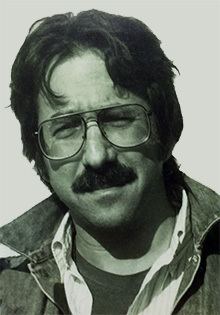Name David Soll | ||
 | ||
Institutions The University of IowaMonoclonal Antibody Research InstituteDevelopmental Studies Hybridoma BankWM Keck Dynamic Image Analysis Facility Notable awards Roy J. and Lucille Carver/Emil Witschi Professorship of the Biological Sciences (1989)Lucille K. George Medal (2009)Rhoda Benham Award (2013)Ian Murray Memorial Award from the British Society of Medical Mycology (1988, 2003) Education University of Wisconsin-Madison | ||
David R. Soll (born April 29, 1942) is a Professor of Biology at the University of Iowa. He is best known for the motion analysis of living cells, the discovery of Candida albicans phenotypic switching and monoclonal antibody technology. He is the current director of the Developmental Studies Hybridoma Bank, Monoclonal Antibody Research Institute, and the WM Keck Dynamic Image Analysis Facility. He is also a member of the board of directors of the Foundation for Monoclonal Antibody Research. He is a Fellow of both the American Academy of Microbiology and the American Association for the Advancement of Science since 2006. He has published over 330 articles in various fields of biomedicine, and has received more than 78 grants and contracts, founded four companies, and is active on four editorial boards for major scientific publications.
Contents
Background
Soll was born in South Philadelphia, Pennsylvania and graduated from Central High School (Philadelphia) for Boys in 1959 with a BA. He then attended the University of Wisconsin from 1960 to 1969, receiving a BA, MS and PhD. He served as a post-doctoral fellow and taught Introductory Biology at Brandeis University. In 1972 he joined the Department of Biology at the University of Iowa as an Assistant Professor. In 1976 he became an Associate Professor and in 1982 a Full Professor. In 1989 he was awarded the Roy J. and Lucille Carver/Emil Witschi Professorship of the Biological Sciences, and in 1989 also became a Full Professor of Dentistry. In 2005, he was elected a Fellow of the American Association for the Advancement of Science (AAAS) and in 2006 a Fellow of the American Academy of Microbiology. In 2009 he was awarded the Lucille K. George Medal from the International Society of Human and Animal Mycology, and in 2013 he was awarded the Rhoda Benham Medal from the Medical Mycological Society of the Americas. David Soll was married for 30 years to Michele Morice and has three children, Jacob Soll, Samantha Soll and Benjamin Soll.
Career
From 1965 to 1970, he worked on the germination of Blastoclandiella emersonii under the mentorship of David Sonneborn and discovered that complex differentiations can be preprogrammed and occur without RNA or protein synthesis. From 1972 to 1978, he and colleagues worked on the "accumulation and erasure of morphogenetics information" in Dictyostelium discoideum. In 1979, he formulated the first model and conditional methods to analyze timer pathways in developing systems. From 1977 to 1984, he developed pH-regulated dimorphism and applied it to study the regulation of the bud-hypha transition in Candida albicans In 1985 and 1987, he and colleagues discovered the first high frequency switching system in the pathogenic yeast Candida albicans. Next to this phenotypic, morphological switching system he and his co-workers also discovered the epigenetic, phenotypic white to opaque switching system. In 1989, he and Dr. E Voss finished and licensed the Dynamic Motion Analyses System (DMS), to Motion Analyses Corporation of Santa Rosa, CA. In 1997, Soll and Voss obtained the patent for DIAS, the next generation of DMS. In 1992 Soll founded the company Solltech, Inc., a computer software and hardware development company to develop and distribute DIAS. From 1987 to 1995, he and co-workers developed the first DNA fingerprinting probes for studying the population structure of infection fungi, and in 1995 received a patent for the software DENDRON, which analyzed DNA fingerprints. In 1995, Soll formed the company Caviforce Technnologies to develop a method of using ultrasound for seed germination. From 1995 to 2004, he and colleagues developed the first 3D Dynamic Image Analysis System (3D-DIAS) for cells and embryos, describing how embryos form and amoeboid cells crawl. Ultrasound Solutions Inc., was formed in 1999 to develop the technology to use ultrasound in waste management. In 2003 Soll founded the company Solltechnologies Inc., to sell DIAS and Dendron software. From 2005 to present, he and colleagues discovered that Candida albicans forms a "pathogenic" biofilm and a "sexual" biofilm, depending on the configuration of the mating type locus and identified the alternative pathways regulating each biofilm. From 2011 to present, he and colleagues developed a 4D model for reconstructing and motion analysing cancer tumors, the formation of cancer tumors in 3D, and the software to reconstruct and motion analyze the 3D tumors.
Current Work
Soll is now the Director of the Developmental Studies Hybridoma Bank (DSHB), a NIH National Resource, Director of the W.M. Keck Dynamic Image Analysis Facility, Director of the Monoclonal Antibody Research Institute and on the board of the Foundation for Monoclonal Antibody Research. His research groups now focus on 1) the role of mating and switching in the pathogenesis of Candida albicans, 2) cell motility and the cytoskeleton, 3) advanced monoclonal antibody technology and 4) methods for suppressing tumorigenesis in cancer patients.
